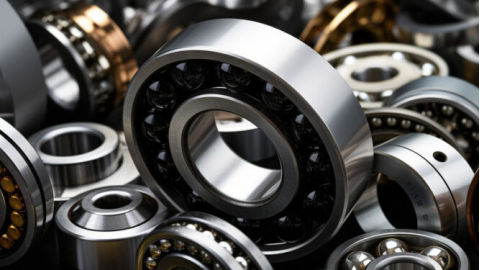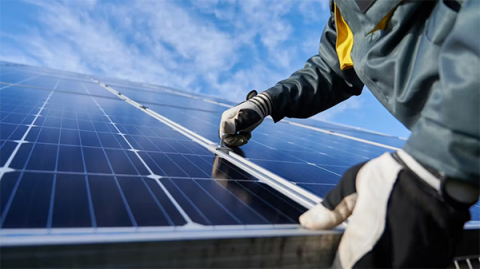Top 10 Personal Protective Equipment Manufacturers
Personal Protective Equipment (PPE) is gear designed to protect the wearer from health and safety risks. After the COVID-19 pandemic, the importance of PPE rose sharply. It is now a key part of global healthcare, industry, and public sectors. This list ranks top PPE makers based on innovation, global reach, product range, and compliance.

What is PPE and Why is it important?
PPE includes protective clothing, helmets, goggles, masks, and other items. It shields the wearer from injury or the spread of disease. In medical settings, PPE is vital for stopping infectious pathogens like COVID-19. In industrial settings, it protects workers from physical, chemical, and biological hazards. Global rules from groups like OSHA and the EU require PPE use to ensure workplace safety. Without proper PPE, serious health problems can occur, including infections, injuries, or death.
How We Rank the Top Manufacturers
We judge manufacturers on key points. These include yearly revenue and market share. For example, 3M reported over $8 billion in PPE sales for 2022. We also look at product innovation, like Honeywell's reusable respirators. Global distribution and strong supply chains matter, especially during the pandemic. Certifications like ISO 13485 for medical devices are important. So are sustainable practices, such as using recycled materials. Customer reviews and industry awards also help rank these companies.
3M Company
3M is a giant in the PPE industry. It offers a wide range of products. These include N95 respirators (like the 1860 model), safety goggles, and hearing protection. Their innovations include Advanced Electret Media technology. This improves filter efficiency. During COVID-19, 3M's global supply chain grew to make 2 billion masks a month. The company focuses on sustainability with a goal to be carbon neutral by 2050. 3M's PPE meets global standards like NIOSH and CE. Challenges include fighting counterfeit products and meeting sudden demand spikes.
Honeywell International Inc.
Honeywell provides a variety of industrial PPE. Their products include North series respirators and Miller fall protection gear. They innovate with Connected Worker technology. This uses sensors to monitor worker safety in real time. In 2022, Honeywell reported over $4 billion in PPE sales. They have a strong global presence, especially in Asia and North America. The company focuses on digital tools, like using AI to predict maintenance needs. Their products are certified by ANSI and OSHA. Challenges include supply chain disruptions, which they manage with local production.
DuPont de Nemours, Inc.
DuPont is known for high-performance materials. Their Tyvek protective suits are used in medical and industrial settings. Other products include Chempak for chemical protection and Nomex for fire resistance. DuPont innovates with lightweight materials for better comfort. In 2022, their safety and construction division had over $6 billion in revenue. The company stresses sustainability through recycling programs to cut waste. They hold certifications like ISO 9001. Challenges include changes in raw material costs, managed with long-term contracts.
Ansell Limited
Ansell focuses on medical PPE. Their products include surgical gloves and infection control items. They innovate with items like the Micro-Touch surgical glove. It offers better touch sensitivity. Ansell has a strong market in the Asia-Pacific region. Their 2022 revenue was over $1 billion. They focus on compliance with FDA and CE standards. Sustainable efforts include reducing water use in manufacturing. Challenges include issues with latex allergies, which they address with synthetic options.
MSA Safety Incorporated
MSA Safety provides specialized industrial PPE. Their products include gas detection instruments and V-Gard helmets. These are often used in the oil and gas industry for their durability. Innovations include the FireHawk M7 SCBA for firefighters. MSA reported over $1.4 billion in sales for 2022, mainly in the US and Europe. Certifications like UL and CE ensure safety. They focus on digital trends, like cloud-connected devices. Challenges include changing industry needs, which they meet with custom solutions.
Kimberly-Clark Corporation
Kimberly-Clark is known for hygiene and medical PPE. Their products include surgical gowns and masks. They innovate with Hydroknit technology for fluid resistance. The company has a global distribution network. Their 2022 PPE sales were over $3 billion. Kimberly-Clark emphasizes sustainability by reducing plastic use. Products meet ASTM standards. Challenges include competition from low-cost makers, but strong brand loyalty helps them compete.
Lakeland Industries, Inc.
Lakeland specializes in industrial protective clothing. This includes chemical suits and flame-resistant apparel. Their Barrierwear line is for handling hazardous materials. Innovations include lightweight materials for better movement. Lakeland reported over $500 million in revenue for 2022, mainly in North America and Europe. They focus on compliance with standards like NFPA. Sustainable efforts include using recycled polyester. Challenges include a niche market focus, but they thrive through specialization.
Alpha Pro Tech, Ltd.
Alpha Pro Tech makes PPE for infection control. Their products include face shields and surgical gowns. They innovate with items like the NTouch face shield. It has an anti-fog coating. The company had over $100 million in sales for 2022, mostly in the US. FDA approvals ensure safety. They responded to pandemic demand by expanding production. Challenges include smaller size, but they compete with agility.
Other Notable Manufacturers
Other key players include Cardinal Health, Lakeland Industries, and UVEX Safety Group. Cardinal Health makes medical gloves with antimicrobial features. UVEX offers eye and head protection with photochromic lenses. These companies handle challenges like supply chain issues by diversifying sources. Market trends include more automation and smart PPE use.
Future Trends in the PPE Industry
The future of PPE includes smart gear. Think vests with sensors for real-time health monitoring. Sustainability will drive use of biodegradable materials. The lasting impact of COVID-19 will stress stockpile resilience and local production. Changing regulations may require stricter testing for new pathogens. Tech innovations like 3D printing could allow for custom PPE. Challenges include global inequality in PPE access, but programs like WHO's Solidarity Trial are addressing this.




